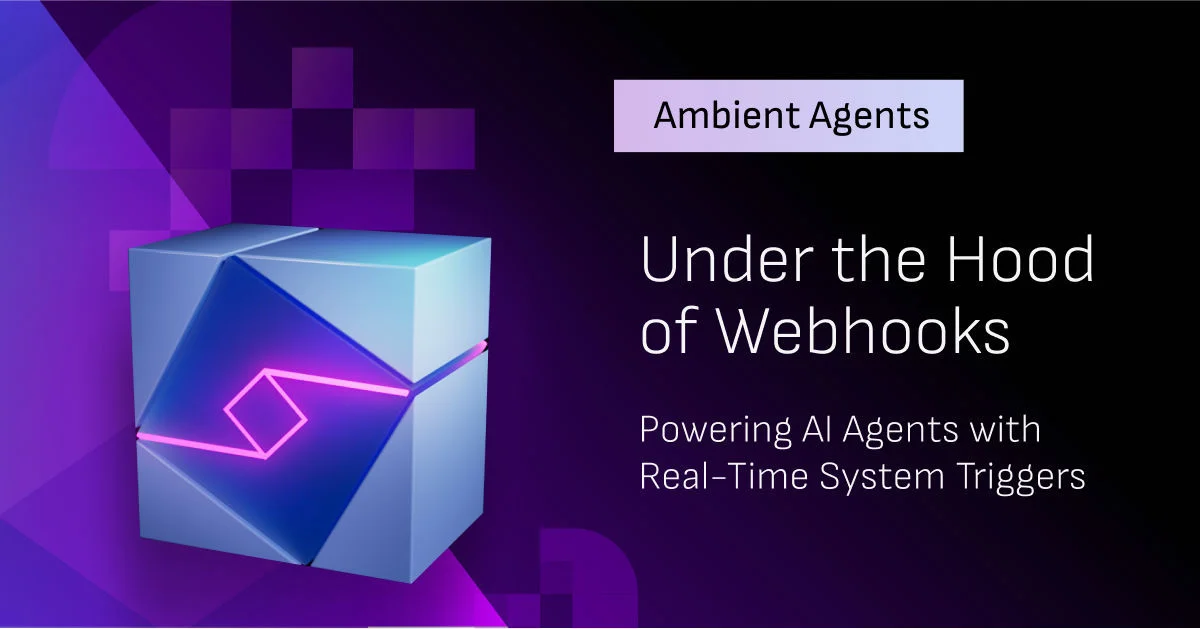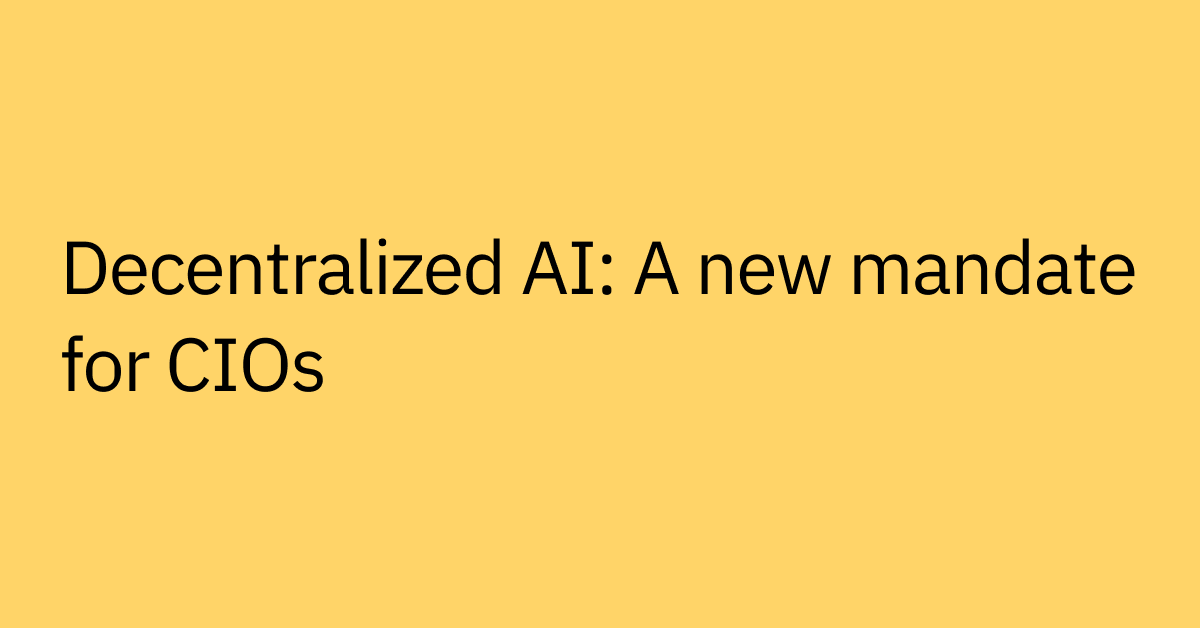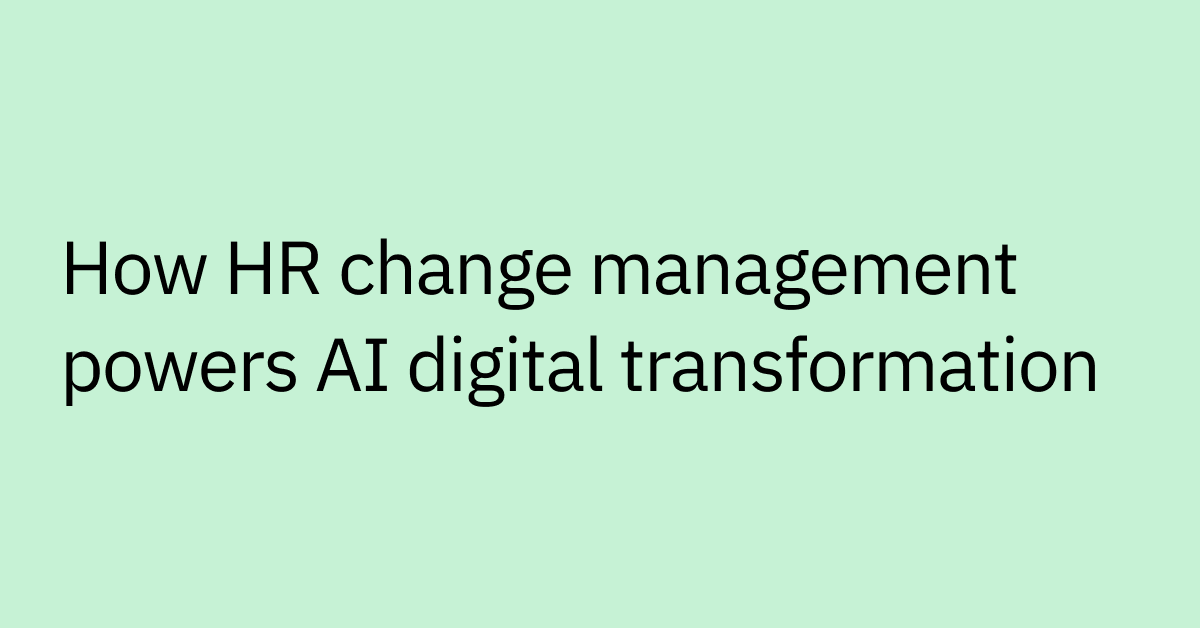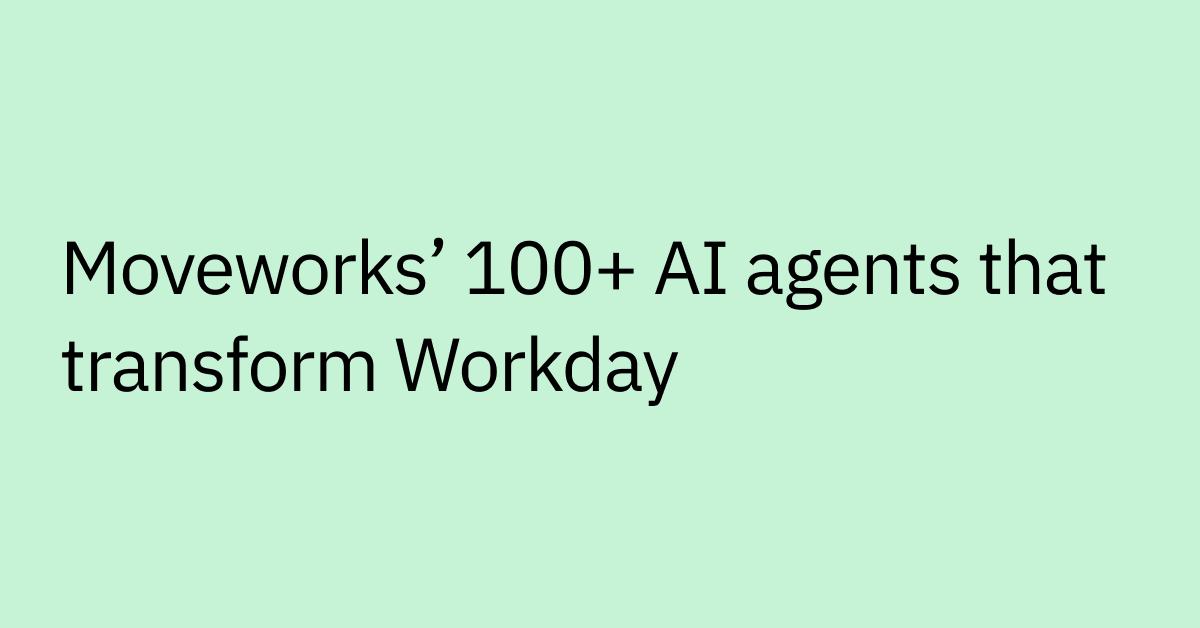Table of contents
Highlights
- Webhooks enable instant event-driven automation by transmitting data between systems the moment an event occurs.
- In Moveworks Agent Studio, secure webhook listeners act as the real-time signal layer that keeps Ambient agents continuously aware of system changes.
- Each webhook trigger authenticates, validates, and routes event payloads to the correct process, ensuring both speed and reliability at enterprise scale.
- Secure design principles—like HMAC verification, rate limits, and payload schema validation—protect against unauthorized or malformed requests.
- Moveworks Ambient agents leverage webhooks to turn real-time system signals into proactive, automated workflows that are able to act the moment change happens.
At their core, webhooks are a way for a system to send real-time data to another the moment an event happens.
Webhooks spring into action the moment they're needed, ensuring your agents aren't just fast and reliable, but are always listening.
A stalled deal, a new support ticket, a critical system alert… by the time you notice, the opportunity to act in a timely way may have passed — the customer has moved on, the issue has escalated, or the window to prevent an outage has closed.
That’s why speed and precision matter. Ambient agents don’t wait for you to ask. Instead, they act when the world around them changes.
Their secret? System triggers that bring real-time context into the Moveworks platform. For the fastest, most precise triggers, that calls for webhooks.
In this post, we’ll unpack the webhook engine inside Moveworks Agent Studio, our agentic AI developer platform, to uncover how webhooks are triggered, how you can build your own Ambient agents powered by webhooks, and insights into best practices.
What are webhooks?
A webhook is essentially a "digital doorbell" for applications. A webhook allows one system to send instant, real-time notifications to another as soon as a specific event occurs.
For example, when a prospect submits a form on your website, that action can trigger a webhook that sends a small packet of data, including their name, email, and the page they visited, to another system. That system might then create a new CRM record, start an email sequence, or notify your sales team through native collaboration tools.
More specifically, a webhook is an HTTP(S) request that a source system sends to a URL you control, with:
- Headers (event type, signatures, timestamps)
- Query Params (validation tokens)
- Payload (usually JSON)
Why webhooks matter for automation
Webhooks are the foundation of event-driven, proactive automation. They are what make real-time workflows possible, for example the moment a deal moves stages, a server status changes, or a security questionnaire is ready for review. This real-time handoff is what keeps workflows fast, efficient, and always in sync with what’s happening across your business.
Why webhooks matter for AI agents
Most reactive or user-triggered workflows rely on polling APIs — repeatedly asking a system if anything’s changed. It’s slow, resource-intensive, and easy to miss crucial signals.
Webhooks flip the model: instead of asking for updates, your system pushes data to Moveworks the instant something happens.
For Ambient agents, that means:
- Zero delays between event and action: The moment a trigger fires, your agent can respond, whether that’s following up on a hot lead or neutralizing a security risk.
- No extra polling cycles: Rather than repeatedly checking for changes, the agent is fine-tuned to your business systems and only when there’s something to do.
For an AI agent, webhooks are its eyes and ears. They are what give the agent awareness of the world in real-time. Delivering this speed, efficiency, and context at scale requires more than just “catching” an event. It requires a robust listener that can securely handle, validate, and pass along those events without bottlenecks or errors.
Roll-up-your sleeves and build Ambient agents? Sign up for one of our AI Agent Hackathons coming to a city near you.
Anatomy of a Moveworks webhook listener
A Webhook listener is an HTTP(S) endpoint that receives events from your systems. Each webhook listener in Agent Studio has:
| Component | What It Does |
|---|---|
| Endpoint URL | Unique to your listener, used by the sender to POST events |
| Authentication | HMAC signature or token-based; prevents spoofed requests |
| Payload Schema | Defines expected fields and types; can be strict or generated from examples |
| Debounce | Collapses bursts or drops duplicate events |
| Event Pipeline | Validates, logs, and delivers events to subscribed plugins |
Inside the event processing pipeline
A webhook listener isn’t just a mailbox, it’s more like an air traffic controller for your events. It has to authenticate every signal, strip out the noise, and route the right payload to the right agent without delay. At small scale, a webhook might just mean a single payload sent from one system to another. But at enterprise scale, thousands of events can hit your listeners every minute, from multiple systems, each with its own format, timing, and information.
When a system sends a request to your listener:
- Synchronous verification
- Enforce HTTP(S), validate signature or token, parse body, apply rate limits
- Fail fast on bad auth, expired timestamps, or malformed payloads
- Asynchronous processing
- Create an ephemeral Event record (
event_uuid, listener_id, created_at, payload) - Optionally debounce or dedupe based on your config
- Publish to subscribed plugins for execution
- Create an ephemeral Event record (
A couple of example event payloads are as follows.
High-priority IT ticket:
{
"event": "ticket.created",
"priority": "P1",
"id": "TCK-12345",
"title": "Service degradation in region X",
"created_at": "2025-08-12T17:01:02Z",
"url": "https://example-itsm.local/tickets/TCK-12345"
}Sales call completed:
{
"event": "call.completed",
"call_id": "c_9f2a",
"duration_sec": 1860,
"participants": [
{
"role": "rep",
"email": "alex@example.com"
}
],
"recording_url": "https://example-cc.local/r/c_9f2a"
}Security by design
Every webhook listener in Agent Studio is built with security at its core. That’s why we support:
- HMAC-based signature verification
- Sender computes: HMAC (secret, canonical_payload)
- Receiver recomputes and compares to the Signature header
- Optional timestamp header to block replays
- HTTP(S)/TLS only — all endpoints enforce encrypted transport
- Rate limits
- Unsecured listeners: heavily throttled
- Secured listeners: much higher throughput
Building a webhook-triggered Ambient agent
Security, validation, and processing are crucial to the foundation, but the real magic happens when you turn those incoming signals into action. In Agent Studio, that’s where webhook listeners become the eyes and ears of your Ambient agents, ready to kick off the right workflow the moment an event happens.
- Create a Webhook Listener
- Choose auth (HMAC recommended)
- Define schema
- Configure redaction/exclude lists
- Collapse noisy events (e.g., doc.updated)
- Trigger a Process / Plugin
- Once an event meets your trigger conditions Moveworks will execute one or more actions which could include notifications to users, approvals, or be fully behind the scenes. Actions can include:
- Send a reminder (e.g. complete your new employee training)
- Kick off an approval (e.g. for expense or access requests)
- Call an external API (e.g. update a ticket, trigger an automation)
- Once an event meets your trigger conditions Moveworks will execute one or more actions which could include notifications to users, approvals, or be fully behind the scenes. Actions can include:
- Test
- Check logs for accepted/rejected events
- Go live!
Sign-up for one of our AI Agent Hackathons across San Francisco, London, and Bangalore to get hands-on experience building with our latest product innovations, including Ambient agents.
Listener configuration best practices — and why they matter
Configuring webhook listeners well isn’t just a matter of “ticking the boxes.” Each choice you make directly affects security, reliability, latency, and downstream agent behavior. Here’s how to think about the key settings:
- Always enable signature verification or authentication
Why: Without this, your listener is open to spoofed requests from bad actors. In production, this can lead to unauthorized triggers, data leakage, or wasted compute cycles. HMAC signatures and token-based auth ensure that only trusted senders can wake your agents. - Treat unsecured listeners as dev-only
Why: Unsecured endpoints in production face two big risks — security breaches and traffic overload. Moveworks mitigates this with heavy throttling (low rate limits) so they’re safe for experimentation, but these constraints make them unsuitable for time-sensitive production workflows. - Keep event payloads small and focused
Why: Large payloads increase processing latency, risk hitting size limits, and waste bandwidth. Mapping only the necessary fields also reduces the surface area for sensitive data exposure — especially if you pair it with exclude lists for secrets. - Use debounce for chatty sources
Why: Some systems emit multiple near-identical events for the same logical change (e.g., a document “update” event for every keystroke). Debounce smooths out this noise, preventing unnecessary agent triggers and lowering your operational costs.
System trigger types
In Agent Studio, webhooks are one of three core system trigger types that feed real-time context to your Ambient agents. Choosing the right trigger depends on what your objective is:
| System Trigger Type | Best For | Examples |
|---|---|---|
| Webhooks | Instantaneous workflows | Ticket created, status changed |
| Pollers | Near-real-time checks | Drift detection, metric changes |
| Scheduled | Time-based jobs | Daily summaries, batch processing |
Webhooks excel when speed and precision are non-negotiable, delivering event data to your Ambient agents the moment it’s available, so they can act upon it. We’ll dive deeper into pollers and scheduled triggers another time.
Beyond the system trigger
System triggers are the eyes and ears of an Ambient agent. It needs to be combined with a process, which acts as the brain and hands, interpreting signals and determining the path forward. Once triggered, the Ambient agent will evaluate what needs to happen to execute workflows from start to finish.
The Ambient agent may choose to:
- Leverage LLM reasoning – make decisions, interpret context, generate or summarize content
- Perform system-level actions – parse files, make API calls, update records, or trigger workflows
- Engage human-in-the-loop oversight (when needed) – route tasks for review or approval when confidence is low or human judgment is required
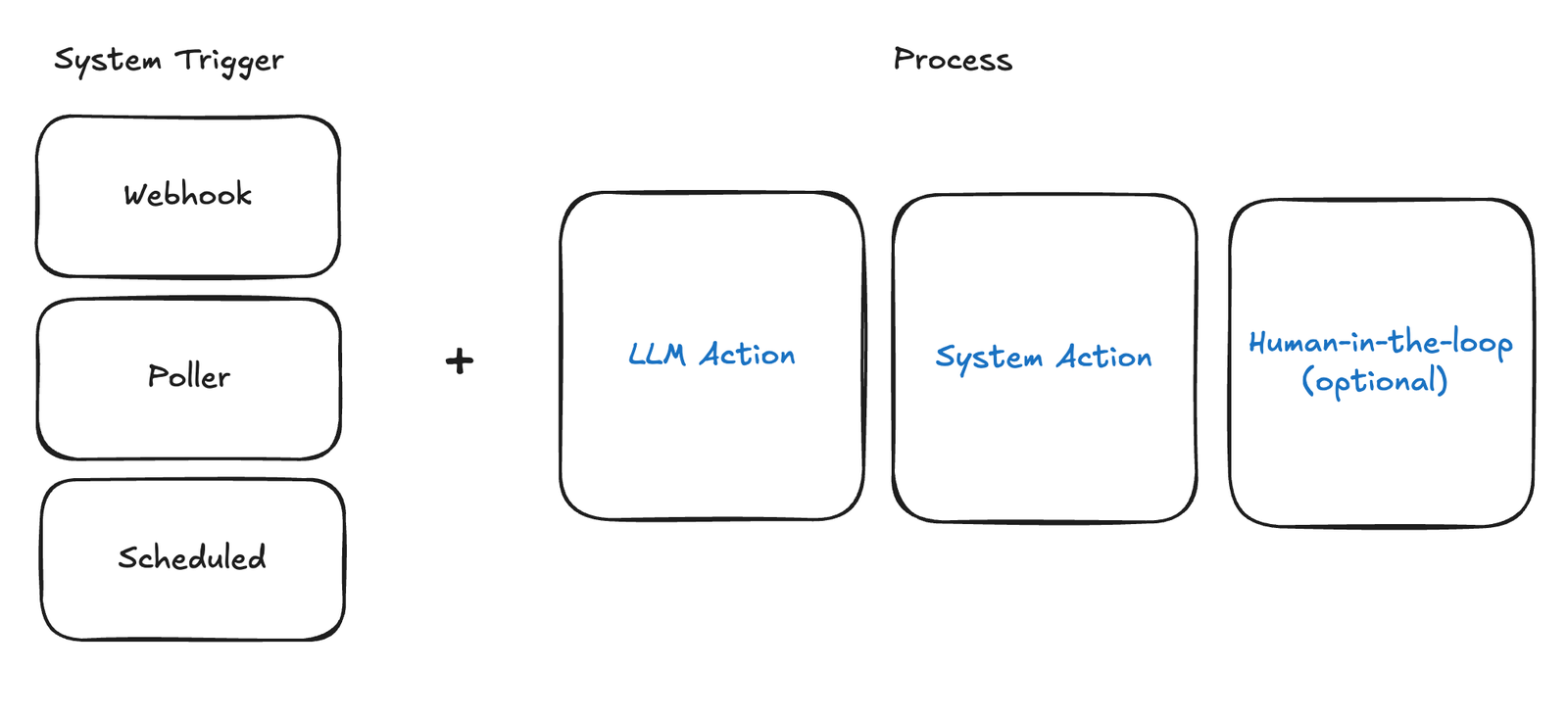
Webhooks give your Ambient agents instant awareness of what’s happening across your business systems. With Agent Studio, you get that awareness paired with enterprise-grade security, observability, and guaranteed outcomes, so all that’s left is to design the workflow and watch it run.
Roll-up-your sleeves and build Ambient agents? Sign up for one of our AI Agent Hackathons coming to a city near you.
